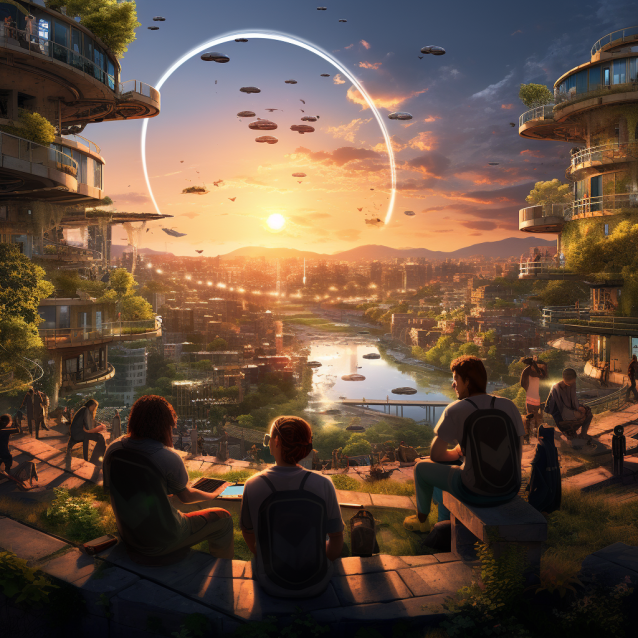
CoCreation Reimagined: My Journey from Community Art to Web3 Collaboration
The prologue to building a CoCreated community
24 years ago I started my carer as a community artist working in care homes for older people, but I moved away due to a lack of resources and impact. Web3 has caused me to circle back to a practice I now describe as CoCreation. This text is an exploration of that journey, looking at what CoCreation is and why I’m circling back to it. Along the way I'll also be exploring community art practice in the context of web3.
I define CoCreation as a community collaborating to create, collect and connect. Community Art has always fundamentally been about a group of people in common coming together to express something. It is a creative process, originated by an artist (professional or otherwise), and developed by a community of people, who are the collaborators in the project. Web3 adds another co to the mix, the collector (buyer, patron) who often also becomes part of the community. By holding the community token in their wallet, the collector brings financial and social resources to the project, and is vested in its value creation. This third element brings a strong motivational force that results in people bringing significant discretionary effort to a project. Motivation in web3 community art is significantly enhanced over more conventional forms because it is both fun and functional (more on this later) and is a core element of the co-creation process.
I became passionate about community art for a number of reasons: giving people a voice who didn’t normally have one; the believe that everyone is creative and has more possibility inside of them that is ever realised; it is often fun and playful; because I made the most amazing connections with people. Fundamentally it helped me and the people I was working with live well, and be happier, healthier and more connected. However, community art at the start of the century was always limited in terms of resources, I could live well in the moment, but I would be limited in my power - and if I’m honest - I make art to be more powerful in the world. If I could be a compartmentalised kind of person, who did my work and went home, then maybe I could have made it work, but I’m the kind of person who holds responsibility deeply, who gets wrapped up in a project. The combination of over engagement for limited return and limited impact was not sustainable for me and my family. So I moved away to have more impact elsewhere, and live a more bounded existence. I kept wanting to make art about what it is to exist, and that has created another tension that I’ve been feeding mainly through improv, but also writing, drawing and photography. I spend much of my time thinking and talking about how to live. For me, part of living well is making art with a community of people who want to thrive, with a scalable impact on the world, whilst making enough money to be comfortable from doing it; web3 is creating the conditions for this to happen.
[Web3 is] baking money into fun things and fun into money things. Packy McCormick
We are entering into a way of working where the distinction between what we do for our wellbeing, and what we do to generate income is evaporating in this process of co-creation. I wasn’t looking for it, but I have come to realise that web3 creates the conditions for me to do what I’ve always loved to do.
My practice over the past 20 years has been around the interaction between originators (artists, creators, entrepreneurs) and collaborators from all walks of life. I’ve done this work in theatres, care homes and when leading businesses. At the start of my career, I called it community theatre, later social enterprise, but fundamentally much of it is a similar process.I have working in a co-created way in interactive theatre, where the piece is co-created by the performer in their interaction with the audience (often on a street or in a care home). I still do it in improv, co-creating with fellow performers (often non-professionals) in the moment on that stage. I also see this thread across my business leadership. A performance is the same as a business, is the same as a discord community. Ultimately they are all organisations (however short or long term) working together to achieve something greater than they could achieve on their own. I have never experienced something like web3 before; disparate people globally connected, brought together extremely rapidly around shared values and approaches to co-create. The collection they are involved in brands them / defines their identity and, when well-led (facilitated), they can apply their energy in a very direct way as a collaborative to the creation of something new and valuable in the world. So my role going forward brings my key passions of facilitative leadership and art together. The future for me is as an artist CoCreating with a community of open curious and playful people who want to make a positive difference in the world so that we all live more truly and happily.
I am now getting intentional about building and facilitating a CoCreated community. A community exploring how we live well enabled by web3, creating and collecting art together that expresses something of our shared values and experience.
An experimental Farcaster Client will be part of of the mix; it will be a Community Hub / Vibe Client / Artwork in it's own right.
More to be written on all this. I'm looking forward to CoCreating with you.
Chris (March '22 edit Sep '23)



Intresting post